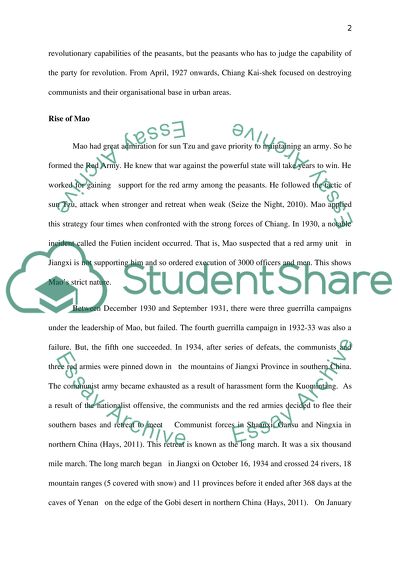Cite this document
(“The Rise of Mao Zedong within the Communist Party in China, Essay”, n.d.)
Retrieved from https://studentshare.org/environmental-studies/1410090-the-rise-of-mao-zedong-within-the-communist-party-in-china-culminating-in-the-proclamation-of-the-peoples-republic-of-china-in-1949
Retrieved from https://studentshare.org/environmental-studies/1410090-the-rise-of-mao-zedong-within-the-communist-party-in-china-culminating-in-the-proclamation-of-the-peoples-republic-of-china-in-1949
(The Rise of Mao Zedong Within the Communist Party in China, Essay)
https://studentshare.org/environmental-studies/1410090-the-rise-of-mao-zedong-within-the-communist-party-in-china-culminating-in-the-proclamation-of-the-peoples-republic-of-china-in-1949.
https://studentshare.org/environmental-studies/1410090-the-rise-of-mao-zedong-within-the-communist-party-in-china-culminating-in-the-proclamation-of-the-peoples-republic-of-china-in-1949.
“The Rise of Mao Zedong Within the Communist Party in China, Essay”, n.d. https://studentshare.org/environmental-studies/1410090-the-rise-of-mao-zedong-within-the-communist-party-in-china-culminating-in-the-proclamation-of-the-peoples-republic-of-china-in-1949.


